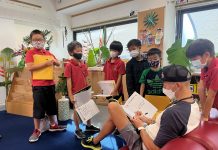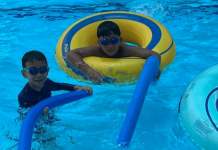
There have been a couple cases of lice reported in elementary and middle school. These have been isolated and Mr. Hagen would like to take the time to provide some basic education about lice. There are some simple things to do to prevent them that are important to know about.
Head lice is a common problem in young children. Head lice is spread mostly by direct head-to-head contact. The sharing of hats, combs, and other hair accessories can also spread head lice, but this is not common. Anyone can get head lice. A head lice infestation has nothing to do with cleanliness or parenting skills. Your help in inspecting your child at least weekly throughout the school year for the presence of head lice would be greatly appreciated.
The procedure for inspection
1. Under bright light begin looking at the back of the head just above the neck and at the behind of the ears.
2. Part the hair section by section and look closely for head lice or nits. Nits will usually be found near the scalp. Nits can not be removed from the hair easily like dandruff. They are almost glued on the hair.
Head lice pictures-https://pediatrics.about.com/od/headlice/ig/Head-Lice-Pictures/
Basic Head Louse Control Recommendations
1.Live lice must be removed or killed. Mechanically removing head lice can be accomplished using a special, fine- toothed comb which requires no use of pesticides. This method is time consuming but can be made easier after the application of ordinary hair conditioner. Various creams and shampoos which contain pesticides are available over the counter for treatment of head lice. These treatments are not always effective and may cause reactions in some children. There are two or three products available by prescription only, which are known to be quite effective at killing head lice. The prescription products also contain pesticides. Recently several over-the-counter brands of head lice shampoos have become available which claim to be non-toxic and effective at killing lice. No known scientific reports exist as to their efficacy.
2. Eggs (nits) of head lice must be removed from the child’s hair. This step is the most crucial and will require most of your time and effort. There are no known products available over- the-counter which kill head lice eggs. Eggs must be removed using a fine-toothed comb or tweezers.
3. Your child’s bedding, clothes, and towels must be washed in warm soapy water and dried in a dryer on the “high heat” cycle.
This step must be completed on the same day as above steps. Any personal items such as toys or stuffed animals which cannot be laundered must be sealed in a plastic bag for two weeks. Although head lice live only on humans, this step will kill any lice or eggs which may have recently fallen off your child’s head. Vacuuming carpets and furniture may also help.
If you suspect your child is infested with head lice please notify the school nurse.
Chiho Stenger, RN Elementary School Nurse Shanghai American School Pudong Campus
Tel 8621 6221 1445 x 3309




